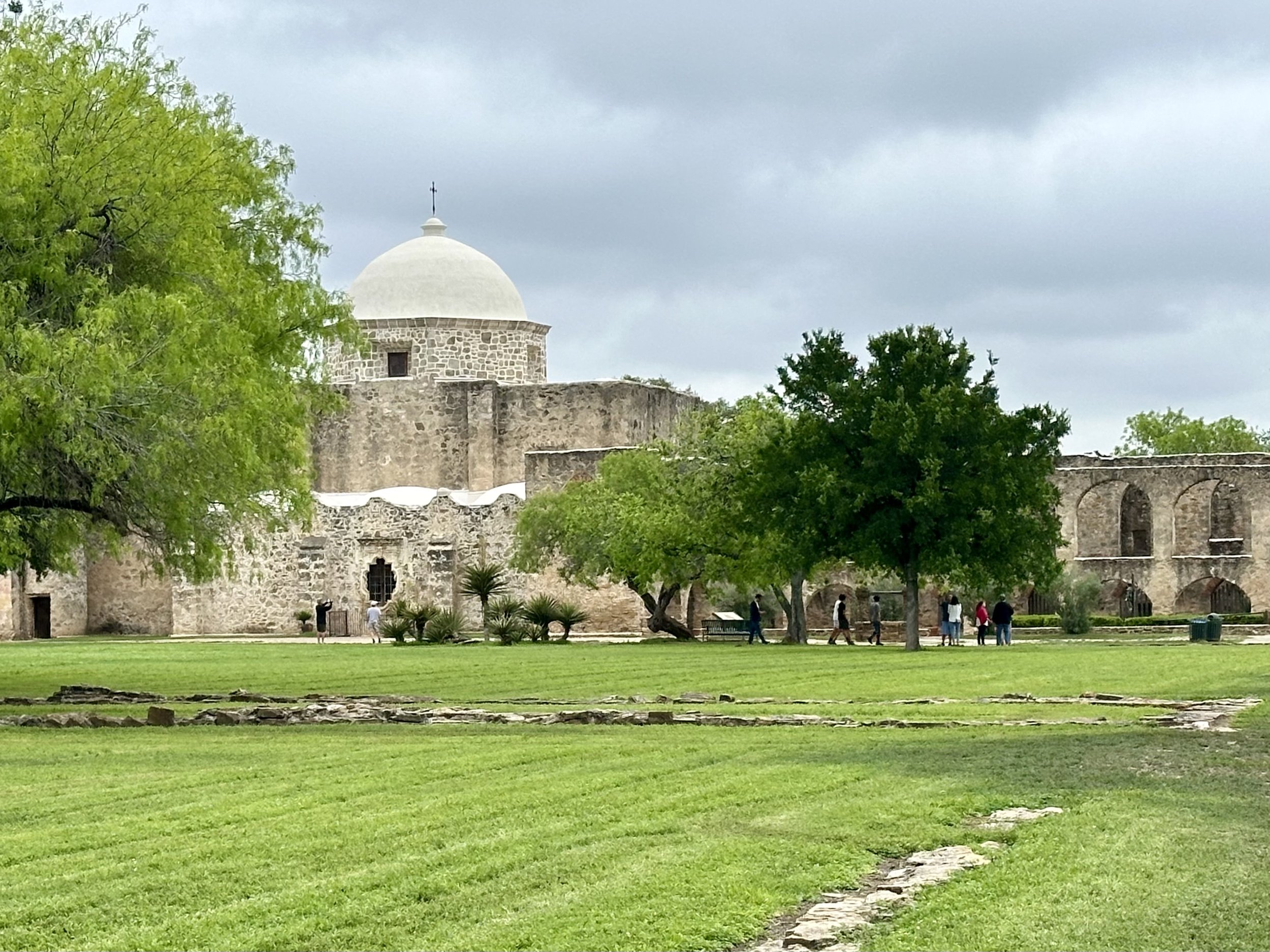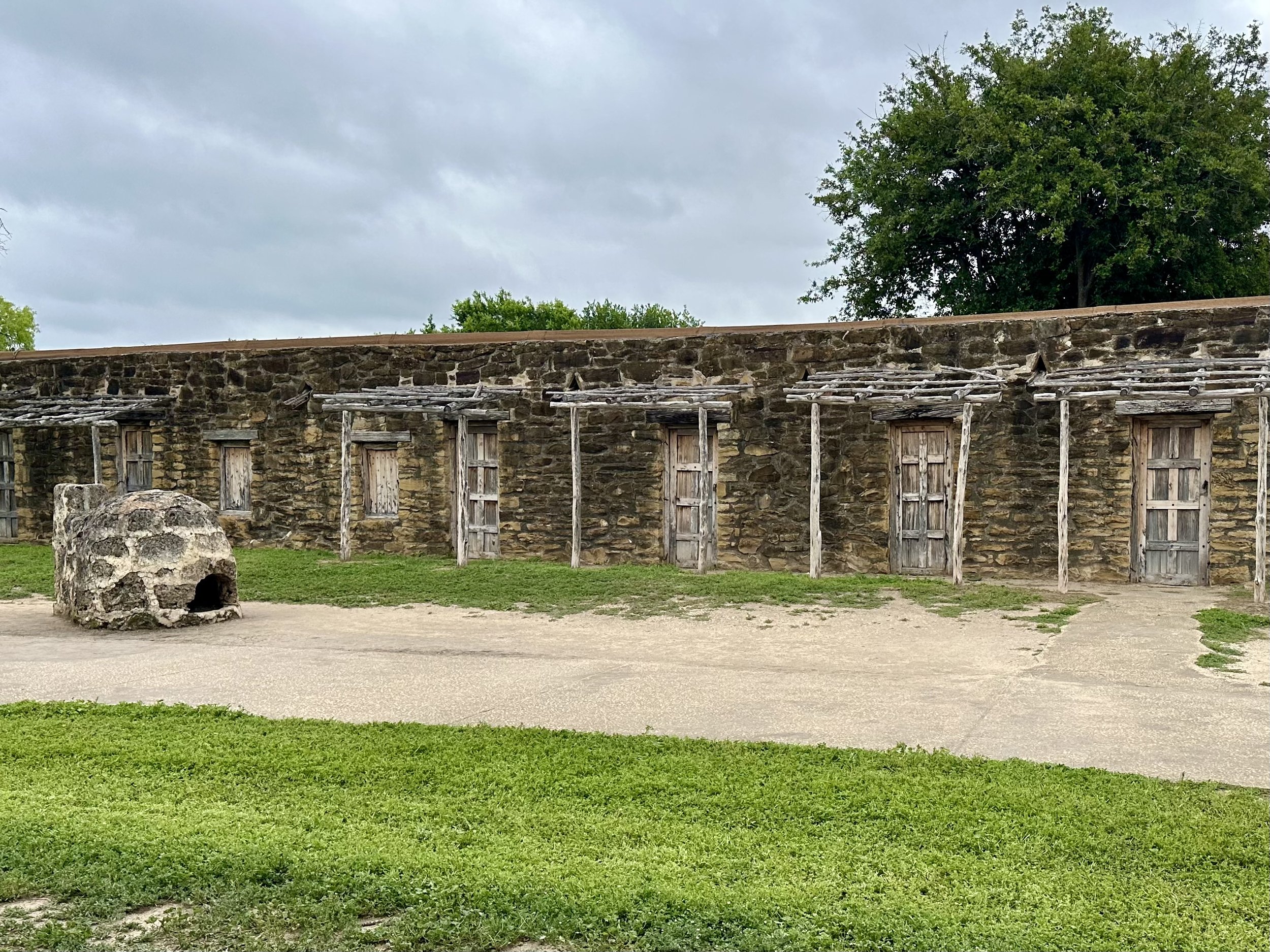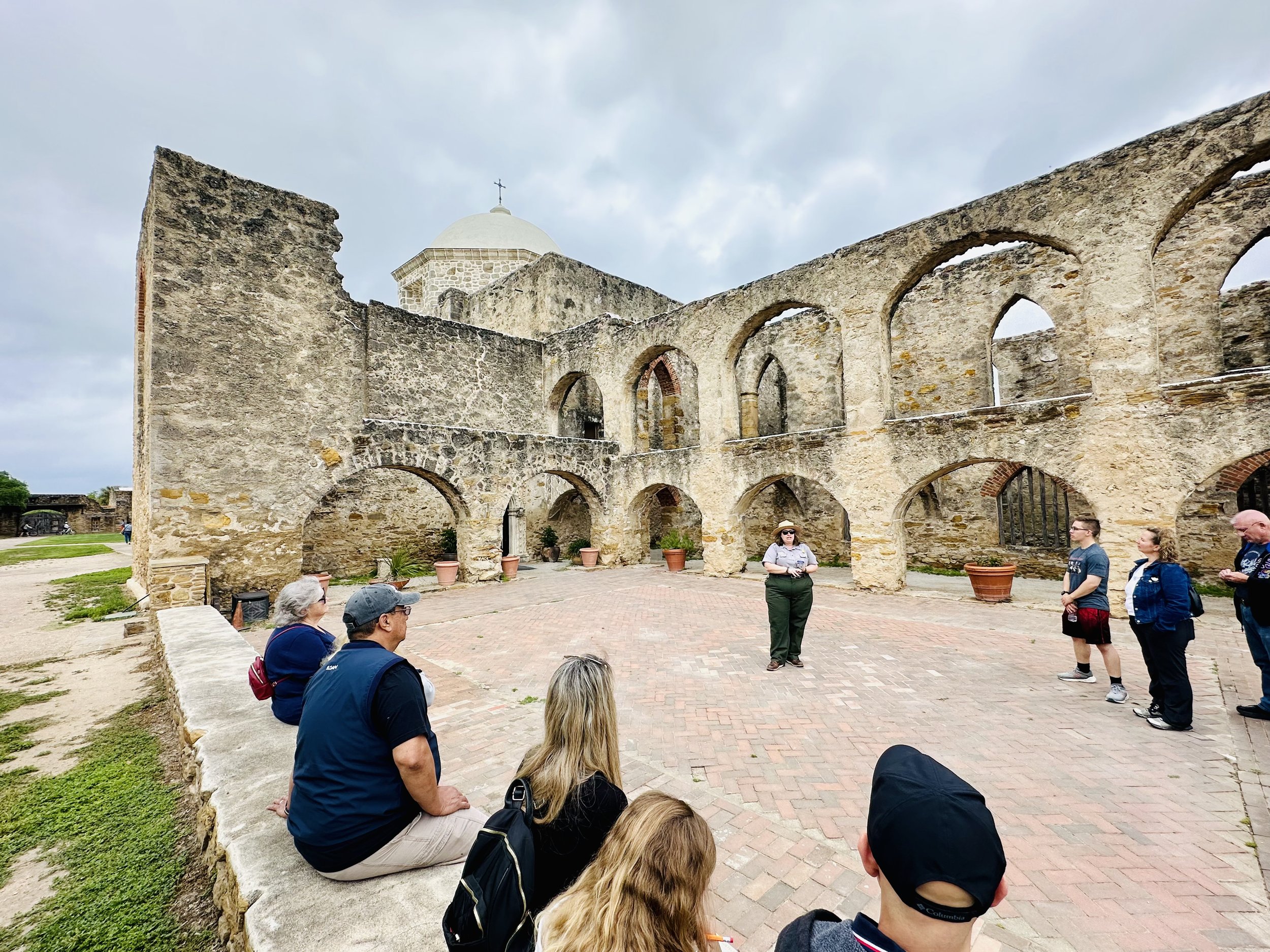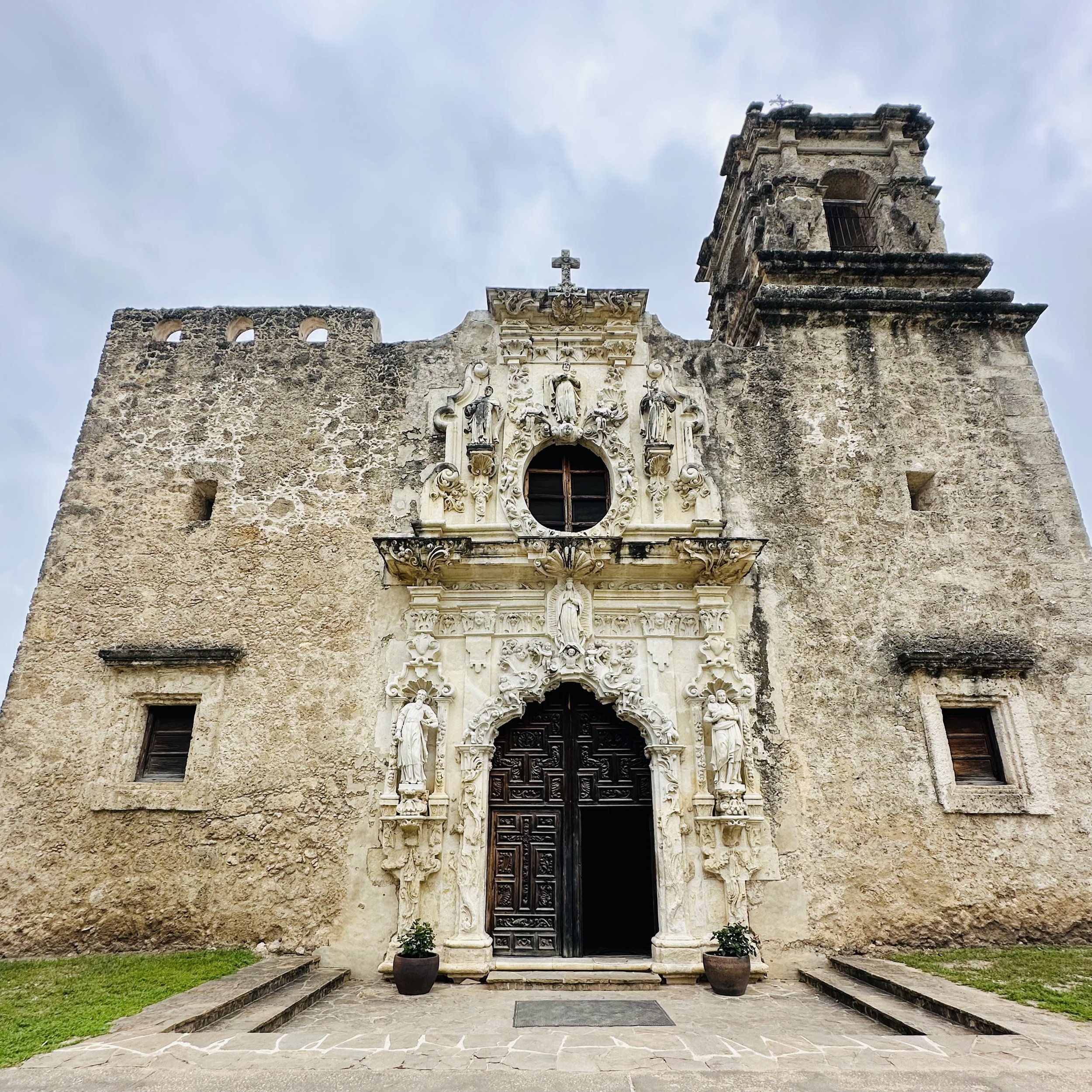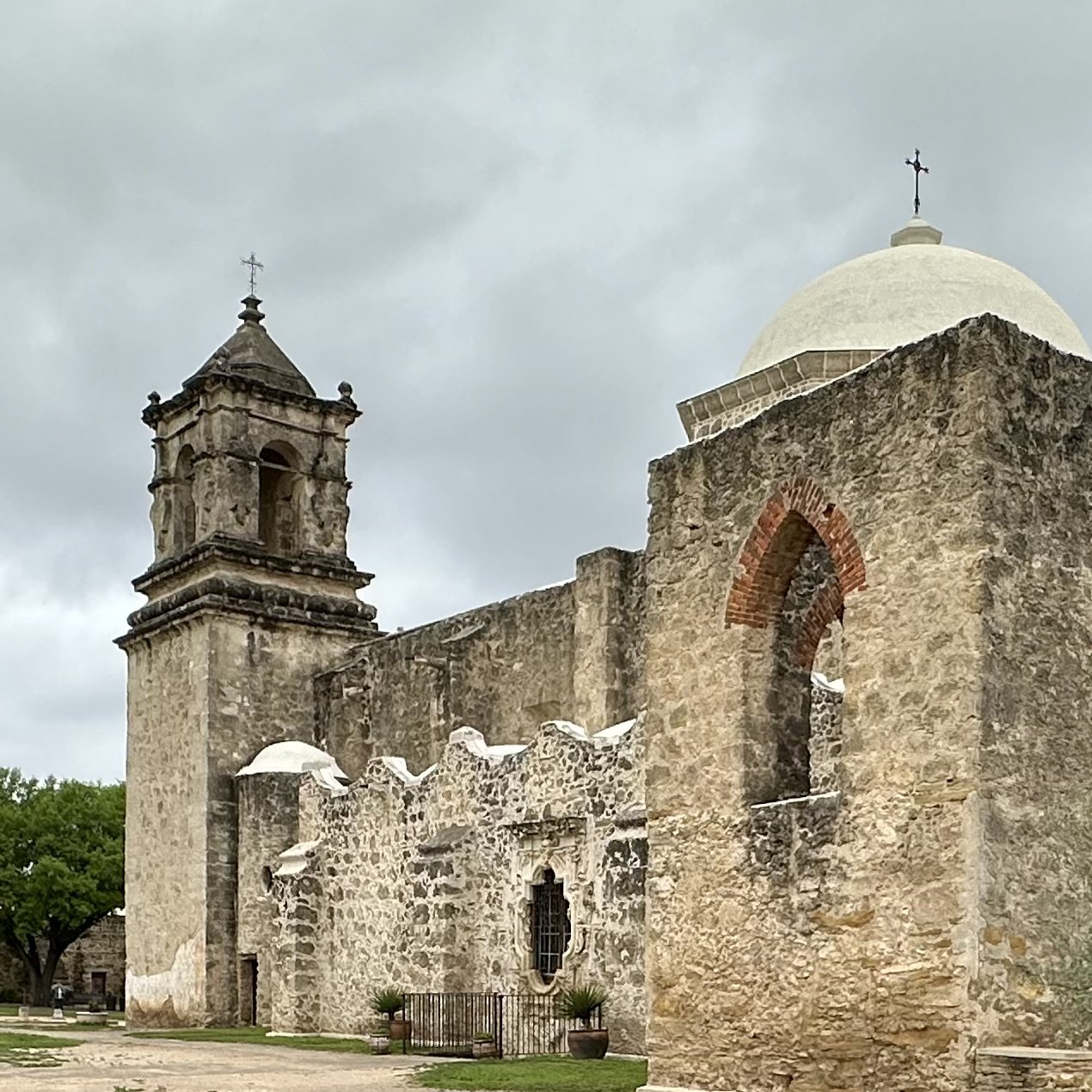San Antonio - Mission San José
Mission San José was the first stop of our day in San Antonio. It is part of the San Antonio Missions National Historical Park, and a UNESCO World Heritage Site.
Missions were the Spanish Empire’s approach to colonizing, evangelizing, and defending the frontier of New Spain. Each mission was a self-sustaining community of indigenous people under the leadership of Franciscan missionaries. The goal was to convert the “Indians” to be Spanish citizens. Bands of native hunters and gatherers, struggling to survive, came to live and work in the mission. In return, they received food, shelter, and protection.
We made sure to arrive at Mission San José in time for a ranger-led guided walking tour. The largest of the missions, it was founded in 1720 and restored in the 1930’s by the WPA. The grass-covered plaza was enclosed by sandstone walls which contained the “Indian quarters.” Just 84 small two-room apartments housed 350 people! A Baroque-style limestone church dating back to 1768 had ornate statuary at the main entrance and a “Rose Window” in the iconic shape of a quatrefoil. A grist mill for grinding flour was powered by water from an acequia (irrigation ditch from the river).
The ranger described daily life for the residents, who were taught languages (Spanish and Latin), religion (Catholicism), and agriculture and trades (so they could pay taxes). They awakened at sunrise for Mass and instruction, then worked long days. They tended crops or livestock, practiced new skills (such as carpentry and weaving), and did the feeding, cleaning and childcare for the community.
It was over 100 years before Mission San José was “secularized” (turned over to the native people living there). Today, all four of the missions in the park are active Catholic parishes. It was interesting to learn how the Spanish and indigenous cultures were interwoven in the history of the American Southwest.
